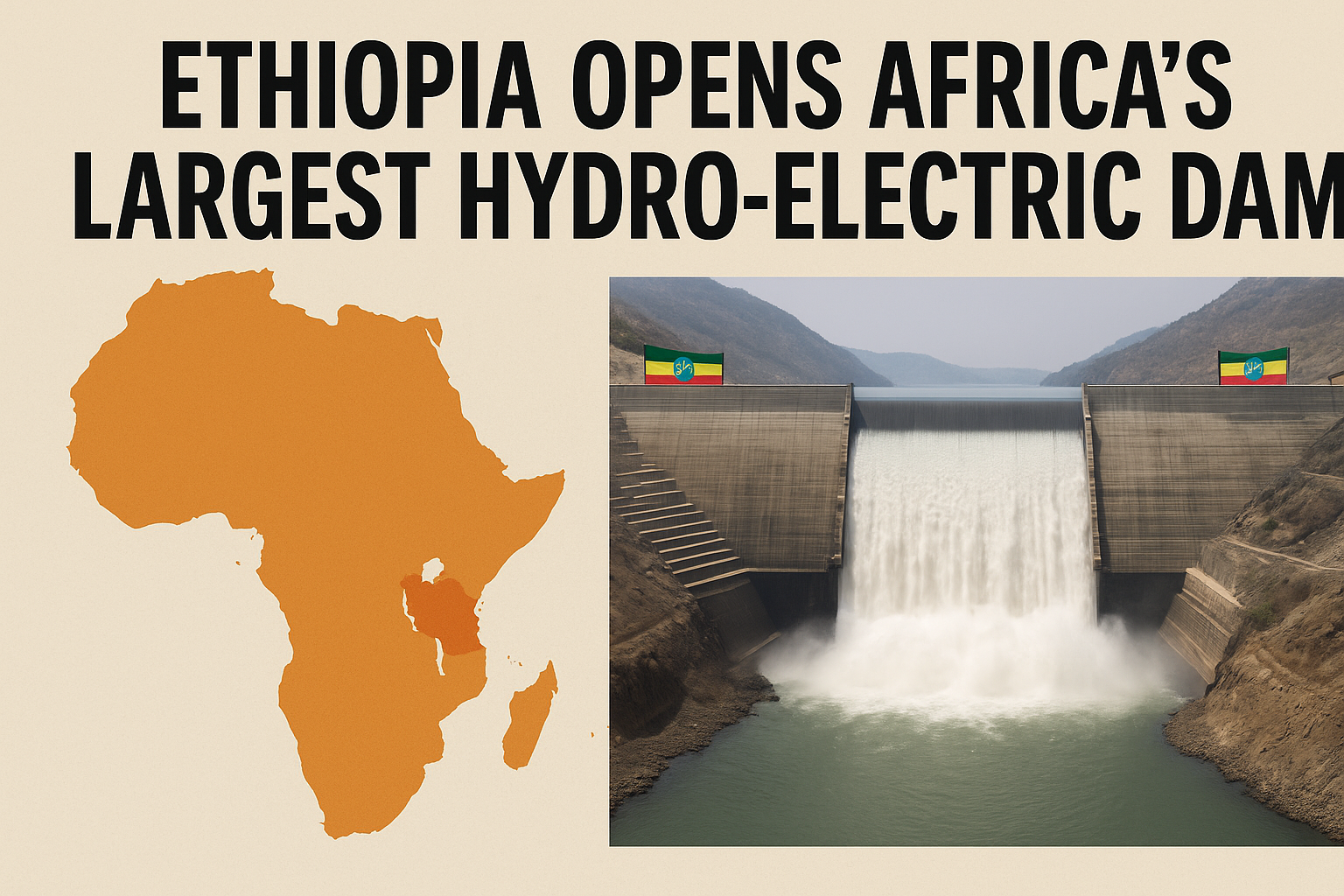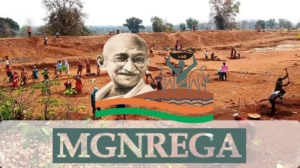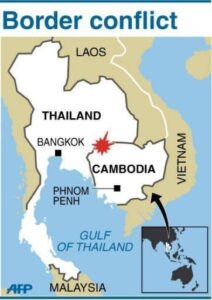Introduction
Ethiopia has inaugurated the Grand Ethiopian Renaissance Dam (GERD) on the Blue Nile River, near Guba on the Ethiopia–Sudan border. After 14 years of political struggle, diplomatic pressure, and economic challenges, the dam is now fully operational, making it the largest hydroelectric dam in Africa.
Key Highlights of the GERD
Project cost: Around $5 billion (₹41,000+ crore)
Funding: 90% from Ethiopian government; 9% from locals, diaspora, and bonds
Height: 170 metres (third highest in Africa)
Water storage: 74 billion cubic metres
Power generation capacity: 5,000+ MW (15th largest hydro dam in the world)
Electricity impact: Will double Ethiopia’s power capacity; about 45% of Ethiopians currently lack electricity
Ethiopia’s Perspective
National pride: Prime Minister Abiy Ahmed declared it a symbol of unity and progress.
Self-reliance: Built without foreign funding despite global opposition.
Development goals:
Boost industrial growth
Support shift to electric vehicles (Ethiopia is the first country to ban fuel-powered car imports)
Export electricity to neighbours like Kenya, Tanzania, and South Sudan
Egypt and Sudan’s Concerns
Egypt’s stance:
Nile supplies 95% of Egypt’s freshwater needs.
Egypt fears reduced water flow and calls GERD an “existential threat.”
Bases claim on 1929 Anglo-Egyptian Treaty, which gave it veto power on upstream projects.
Used diplomacy, UN appeals, Arab League, and even threatened military action.
Sudan’s position:
Mixed response.
Concerns: possible risks to its water security.
Benefits: better flood control, less sedimentation, and access to cheap electricity.
Regional & Global Dimensions
Nile Basin countries (11 nations): Ethiopia, Uganda, Sudan, South Sudan, Egypt, Kenya, Tanzania, Rwanda, Burundi, DR Congo, Eritrea.
International mediation attempts: USA, Russia, UAE, and African Union – but no binding agreement yet.
Geopolitical impact:
Egypt is aligning with Ethiopia’s rivals like Eritrea.
Ethiopia uses the dam as a tool of national unity after internal conflicts (e.g., Tigray war 2020–2022).
Water Security as a Global Issue
Transboundary rivers: Governed by international conventions (1992 UNECE, 1997 UN Watercourses, 2011 UN Resolution).
Challenges: Most agreements are non-binding, making conflicts likely.
Recent trends:
785 water-related conflicts (2020–2023) reported globally.
Studies predict by 2041–2050, 40% of transboundary river basins may face conflicts.
Hotspots: Africa, South Asia, Middle East, North America.
Conclusion
The GERD represents Ethiopia’s determination for self-reliant development and energy independence. While it brings huge benefits to Ethiopia and its neighbours, it also deepens tensions with Egypt and Sudan. For UPSC aspirants, the project is a case study in international politics, resource diplomacy, and sustainable development challenges.
FAQs for UPSC Preparation
Q1. What is the Grand Ethiopian Renaissance Dam (GERD)?
It is Africa’s largest hydroelectric dam, built on the Blue Nile in Ethiopia.
Q2. Why is the GERD significant for Ethiopia?
It will double Ethiopia’s power generation, help in industrial growth, promote electric vehicles, and allow electricity exports.
Q3. Why is Egypt opposing the GERD?
Egypt depends on the Nile for 95% of its freshwater and fears that the dam will reduce its water supply, threatening its national security.
Q4. What is Sudan’s view on the GERD?
Sudan is divided: it worries about water security but may benefit from flood control and cheap electricity.
Q5. What international laws govern river disputes?
1992 UNECE Water Convention
1997 UN Watercourses Convention
2011 UN Resolution on the Human Right to Water and Sanitation
Q6. Why is the GERD important for UPSC exams?
Because it involves international relations, environmental issues, energy security, and resource-based conflicts—all key areas for GS Paper II & III.






